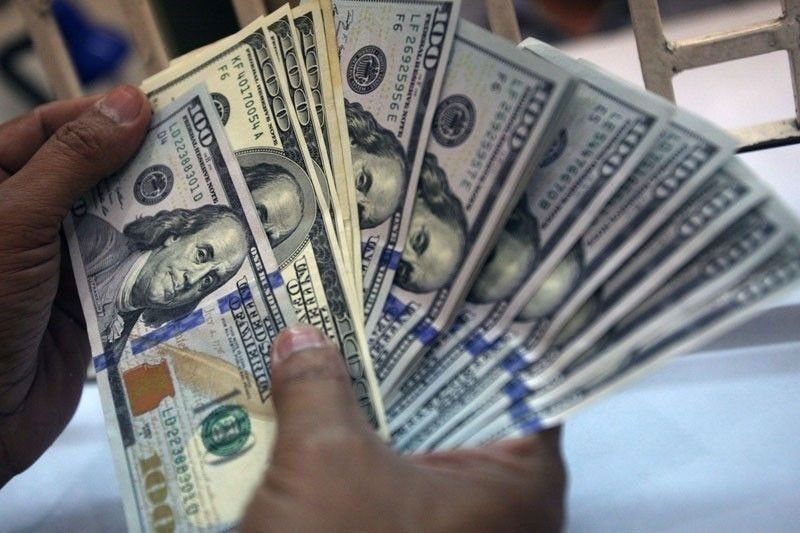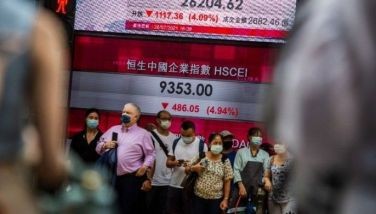Foreign debt rises to record-high $119 billion in 1st quarter

MANILA, Philippines — The Philippines’ foreign debt hit an all-time high of $118.81 billion in the first quarter due to statistical adjustment and as the national government borrowed more from offshore creditors, according to the Bangko Sentral ng Pilipinas (BSP).
Based on BSP data, the latest foreign debt was 8.2 percent higher than the $109.75 billion incurred in the first quarter of last year, and by 6.8 percent compared to the end-2022 level of $111.27 billion.
BSP Governor Felipe Medalla said the rise in the debt level during the first quarter was driven primarily ?by the statistical adjustment involving the inclusion of the non-resident holdings of peso-denominated debt securities issued onshore in the debt stock.
Medalla said the increase was also driven by the net availments of $2.7 billion largely by the national government as it raised $3 billion from the issuance of a multi-tranche global bond for general financing requirements, as well as prior periods’ adjustments of $767 million.
“Borrowings by the public sector for the national government’s general financing requirements, funding of pandemic recovery measures, and other infrastructure programs, among others, also contributed to the growth in the debt stock,” he said.
He also cited the appreciation of other currencies against the dollar which increased the dollar equivalent of borrowings denominated in other currencies, thereby resulting in an overall positive foreign exchange revaluation of $432 million.
Likewise, the BSP chief traced the year-on-year increase in the country’s debt stock to the net availments of $7.6 billion, of which $7.4 billion pertain to national government borrowings, as well as inclusion of non-residents holdings of peso-denominated debt securities amounting to $3.8 billion.
The statistical adjustment, which resulted from the availability of detailed information on non-resident holdings of said securities, is in line with the standards of the International Monetary Fund (IMF) under the External Debt Statistics Guide and the International Balance of Payments and International Investment Position Manual, 6th edition for external debt reporting.
Amid the increase, Medalla said the country’s external debt-to-gross domestic product (GDP) ratio rose to 29 percent in end-March this year from 27.5 percent in the same period last year due to a change in the scope of the external debt stock to include non-resident holdings of peso denominated debt securities issued onshore.
The maturity profile of the country’s external debt remained predominantly medium and long-term in nature, with original maturities longer than one year with share to total at 85.4 percent, while short-term accounts with maturities of up to one year comprised the 14.6 percent balance.
Public sector external debt grew by 11.6 percent to $75.2 billion in the first quarter from the previous quarter’s $67.4 billion, resulting in a higher share of 63.3 percent from 60.1 percent.
About 90.5 percent of public sector obligations were national government borrowings, while the remaining $7.1 billion pertained to loans of government-owned and controlled corporations, government financial institutions and the BSP.
During the quarter, private sector debt slightly declined to $43.6 billion as of end-March from $43.9 billion as of end-2022, with share to total likewise decreasing to 36.7 percent from 39.4 percent.
Major creditor countries include Japan with $14.3 billion followed by the US with $3.6 billion and the United Kingdom with $3.2 billion.
Borrowings from multilateral lending institutions and bilateral creditors emerged as the largest share of 37.9 percent, followed by loans in the form of bonds or notes (35.2 percent) and obligations to foreign banks and other financial institutions (20.9 percent).
The remaining 5.9 percent came from other creditors such as suppliers and exporters.
In terms of currency mix, the country’s debt stock remained largely denominated in dollar (76 percent) followed by Japanese yen (8.3 percent).
The national government borrows heavily from foreign and domestic creditors to finance the country’s budget deficit as it spends more than what it actually earns.
Medalla said the country’s gross international reserves stood at $101.5 billion as of end-March and represented 5.9 times cover for short-term debt based on the original maturity concept.
- Latest
- Trending




























